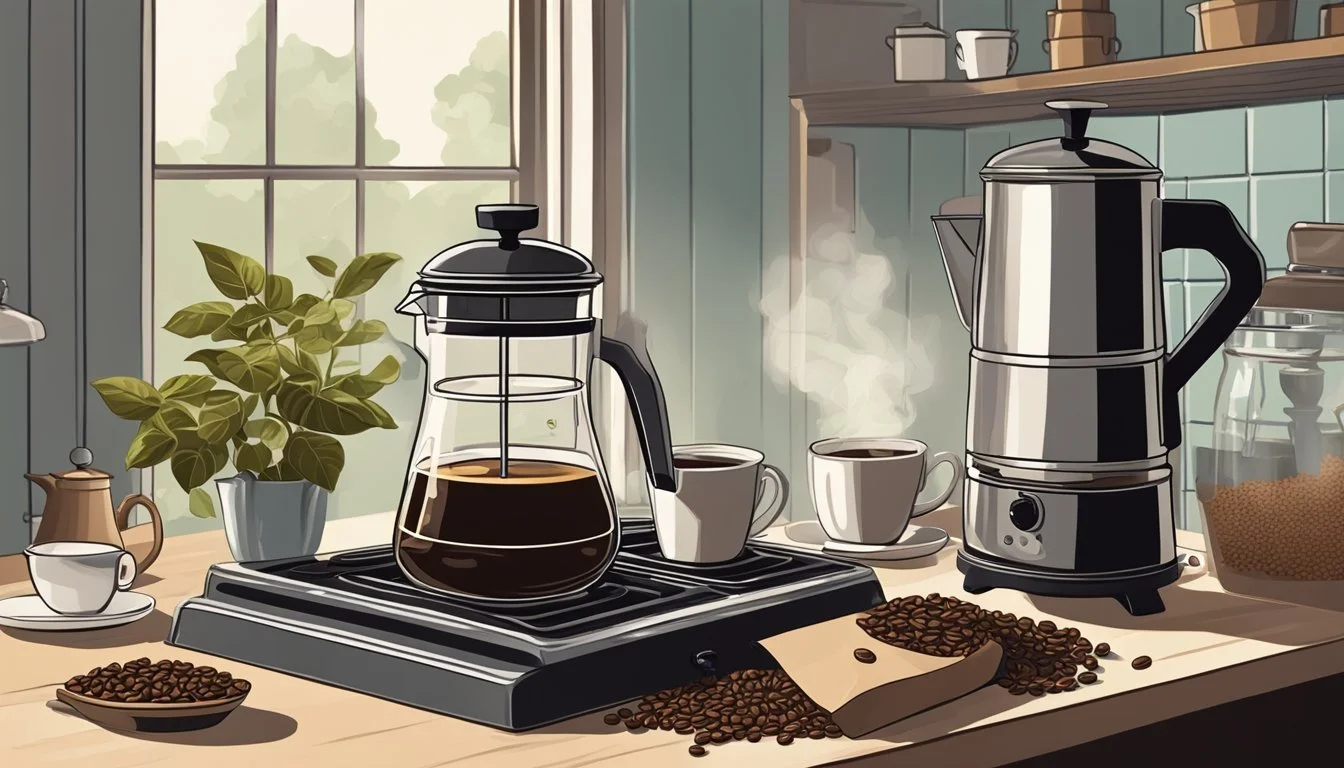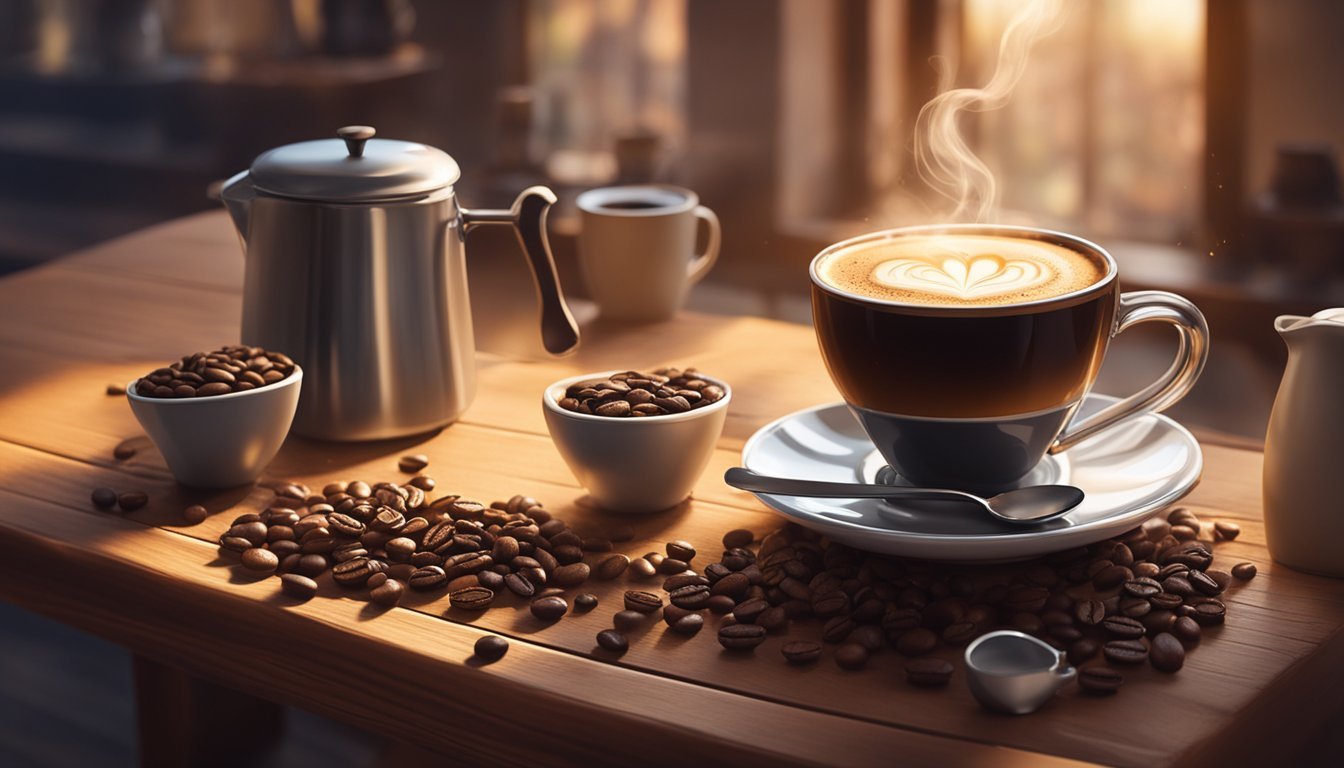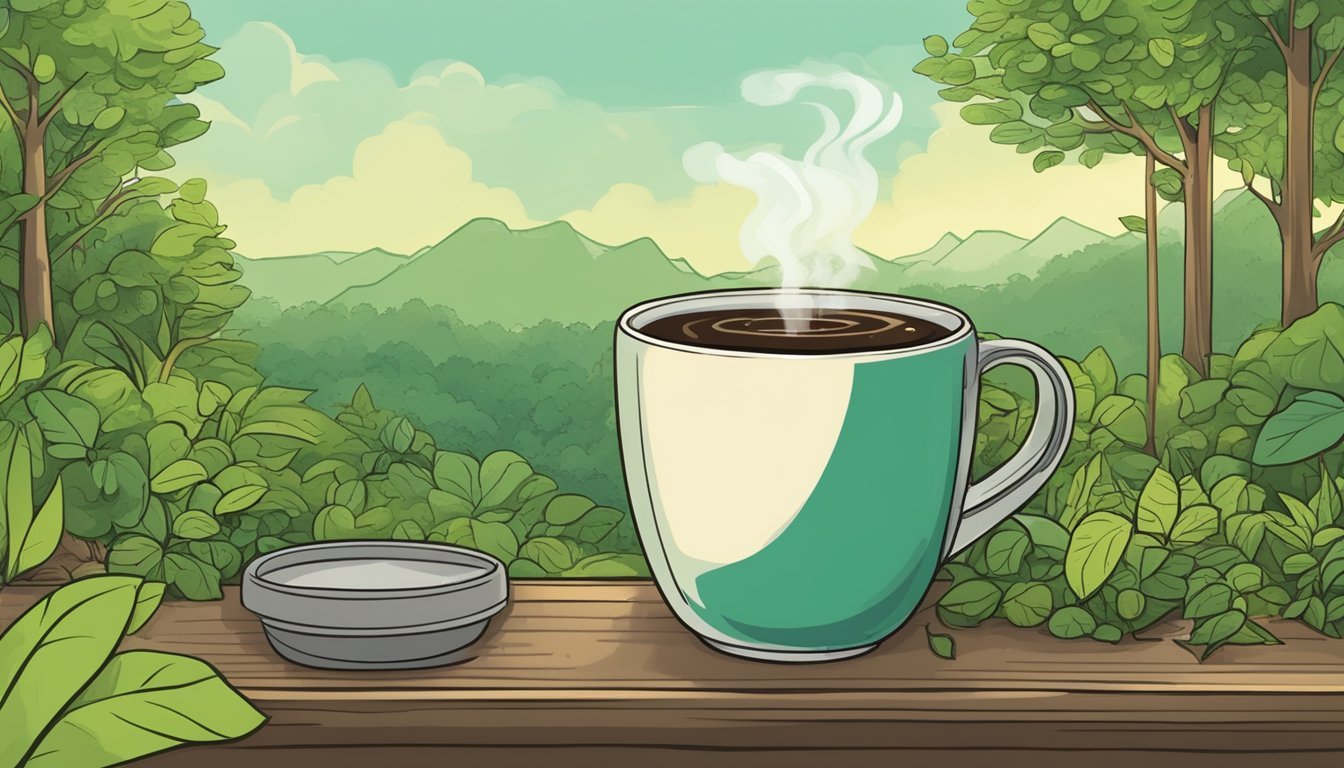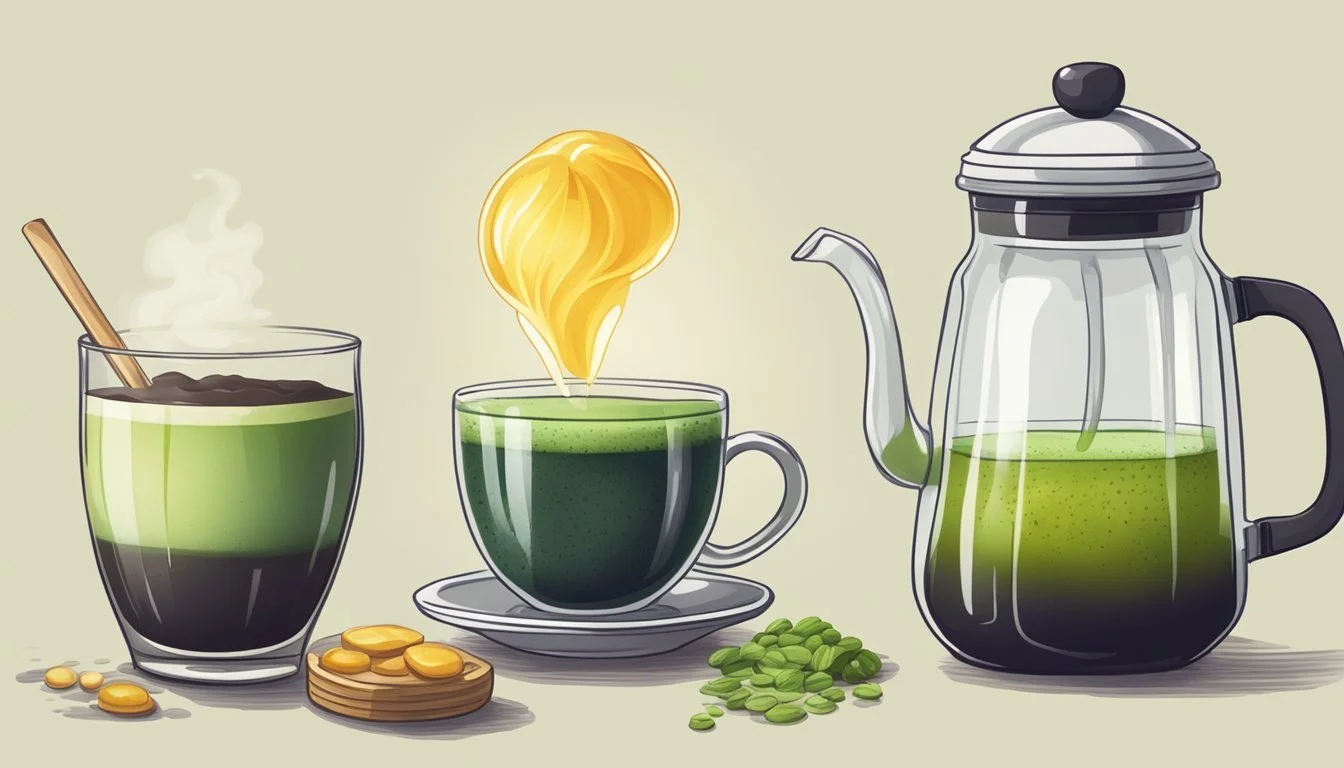Fixing Bitter Coffee
Brew the Perfect Cup Every Time
A perfect cup of coffee is a fine balance of flavor where every sip offers a welcoming blend of aromatics, acidity, sweetness, and body. When this balance tips, bitterness can take over, masking the subtle notes and rich depths that high-quality coffee offers. Bitterness in coffee is often a red flag indicating that something has gone awry in the brewing process—from the grind size and water temperature to the brewing method and duration.
Understanding the intricacies of what causes bitterness is the first step toward crafting a better cup. The bitterness of coffee can result from over-extraction, a process where too many bitter compounds are pulled from the grounds, often due to prolonged brew time or excessively fine grounds. Equally, water temperature plays a pivotal role, as overly hot water can scald the coffee and enhance bitter notes, while water that is not hot enough may lead to under-extraction, resulting in a flat and weak tasting brew.
The pursuit of the ideal cup requires attention to detail and an understanding of the variables at play. Selecting high-quality beans, measuring the correct coffee-to-water ratio, and ensuring clean, appropriately heated water are foundational steps. Adjustments to these elements can help mitigate bitterness, leading to a smoother, more enjoyable coffee experience. With proper technique and a few tweaks, it's possible to turn a bitter brew into a harmonious cup that celebrates all the qualities coffee aficionados cherish.
Understanding Coffee Basics
To brew an impeccable cup of coffee, it's crucial to comprehend the fundamentals such as bean types, flavor profiles, roasting techniques, and the importance of freshness and quality.
Types of Coffee Beans
There are two main types of coffee beans, Arabica and Robusta. Arabica beans are known for their sweeter, softer taste and higher acidity, often with complex flavor and aroma profiles. They typically contain less caffeine than Robusta beans. On the other hand, Robusta beans have a stronger, harsher taste, with a grain-like overtone and nutty aftertaste. These beans are generally more robust and higher in caffeine content.
Coffee Flavors and Aromas
The flavors and aromas of coffee are abundant and can range from fruity and floral to spicy and herby. Factors such as origin, variety, and processing method greatly influence the bean's flavor profile. Coffee connoisseurs often refer to the Coffee Tasting Wheel to describe these complex flavor notes and aromas. They divide them into three primary categories: enzymatic (fruity, floral), sugar browning (nutty, chocolaty), and dry distillation (spicy, carbony).
Roasting and its Impact on Flavor
Roasting is pivotal in shaping coffee's flavor profile. The roasting process transforms green coffee beans into the aromatic, flavored beans we use for brewing. Roasts typically range from light to dark; each level brings out different qualities of the bean:
Light Roasts: Retain most of the bean's original flavors, often resulting in a light body and bright acidity.
Medium Roasts: Have a balanced acidity and body, with more of the roast flavor coming through compared to the bean's inherent characteristics.
Dark Roasts: Offer bolder, fuller-bodied tastes, with decreased acidity and pronounced roast flavor.
Freshness and Quality
The freshness and quality of coffee beans are critical for a perfect brew. Freshly roasted, high-quality beans will yield the best flavor and aroma. Over time, beans lose their freshness, and with it, their vibrant profiles. Coffee quality is influenced by factors such as harvesting practices, storage conditions, and packaging. For optimal taste, it's recommended to use coffee beans within a few weeks of roasting and store them properly in air-tight containers away from light, heat, and moisture.
The Brewing Process
To brew the perfect cup of coffee, one must consider the equipment used, the grind of the coffee, the water temperature, and the coffee-to-water ratio. Each variable can significantly affect the flavor of the final brew.
Choosing the Right Equipment
The equipment selected for brewing coffee plays a critical role in the taste outcome. For instance, a French press will require a coarser grind and a longer brew time than an espresso machine. A burr grinder is preferred over a blade grinder as it provides a more consistent grind size, essential for even extraction.
Key Equipment:
Burr Grinder: For consistent grind sizes.
Espresso Machine: For a concentrated brew.
Coffee Maker: For traditional drip brewing.
Kettle: For precision in pour-over methods.
Grinding for Optimal Flavor
The grind size needs to be matched to the brewing method. A fine grind is ideal for espresso, while a medium-coarse grind suits methods like the pour-over. The grinder should be capable of producing uniform grounds to avoid over or under-extraction.
Grind Size Guidance:
Espresso: Fine grind.
Pour-over: Medium-coarse grind.
French press: Coarse grind.
Mastering Water Temperature
Brewing temperature is crucial for proper extraction. Water that is too hot can cause over-extraction, leading to bitterness. The ideal temperature for brewing coffee generally falls between 195°F and 205°F. Certain brewing methods, like espresso, function best with water at the higher end of this range.
Optimal Brewing Temperatures:
Espresso: 195°F - 205°F
Pour-over: 195°F - 205°F
French Press: 195°F - 205°F
Coffee-to-Water Ratio
The right ratio of coffee to water is essential in achieving a well-balanced cup. A standard guideline would be a ratio of 1:15 (coffee to water). For precision in brewing, weigh the coffee and water rather than using volume measures.
Standard Ratios:
Drip Brew: 1:15 (coffee)
Espresso: Approximately 1:2 (coffee)
By controlling these aspects of the brewing process, the chances of a bitter or unbalanced cup decrease significantly. Each variable should be adjusted based on personal taste preferences and the specific brewing method used.
Common Brewing Techniques
When crafting the perfect cup of coffee, the method of brewing plays a pivotal role in flavor extraction and, ultimately, determines the taste and quality of the brew. Let's explore several popular brewing techniques, each with its unique process and characteristics, to enhance your coffee experience.
Espresso Method
The Espresso brewing technique employs a high-pressure machine that forces nearly boiling water through finely-ground coffee beans. It's characterized by a brief extraction time, usually around 25-30 seconds, resulting in a concentrated and robust beverage. Serving sizes are typically small, with a single shot of espresso measuring around 1 ounce (30 milliliters).
French Press Method
The French Press, known for its simplicity and rich flavors, involves steeping coarse-ground coffee with hot water (typically between 195°F and 205°F) before pressing the grounds away from the liquid. A key consideration for a smooth cup is the brewing time, which often falls around 4 minutes.
Pour-Over Method
In Pour-Over brewing, water at an optimal temperature range of 195°F to 205°F is poured evenly over coffee grounds placed in a filter. This method requires a slow and steady hand to ensure even coffee extraction and an extraction time that generally spans 3-4 minutes. The pour-over is praised for highlighting the nuanced flavors of the coffee.
Aeropress Method
The Aeropress is a versatile brewing method that combines immersion and pressure. The coffee grounds are saturated with water heated between 175°F to 185°F for a short period of 1-2 minutes before being pressed through a filter. This technique yields a smooth and less bitter cup with a quick brewing time.
Drip Coffee Method
Lastly, Drip Coffee, a familiar comfort in many households and cafes, involves hot water dripping through coffee grounds in a filter. Precise control over the water temperature and a brewing time ranging from 5-10 minutes result in a clear and clean cup. Ratios and grind size are adjusted according to machine specifications to achieve a balanced cup.
Solving Bitter Coffee Problems
One may often encounter bitter coffee, which is typically a result of improper grind size, over-extraction or incorrect brewing temperature. This section provides specific adjustments to combat these issues and ensure a flavorful cup.
Adjusting the Grind Size
Grind size influences the surface area exposed to water during brewing, affecting extraction rate. A finer grind can lead to over-extraction and bitterness; whereas a coarser grind may under-extract, leading to a weak, sour taste.
For a less bitter cup: Use a coarser grind.
If coffee is too weak: Try a finer grind.
Remember, these adjustments should be minuscule until the desired flavor is achieved.
Balancing the Brewing Time
The extraction time is critical in avoiding bitterness:
Pour-over: Aim for a 3-4 minute brew time.
French press: 4 minutes is ideal.
AeroPress: 1-2 minutes should suffice.
Espresso: Target 25-30 seconds.
For espresso, if beyond this time frame, bitterness can be prominent due to prolonged extraction.
Tweaking the Brewing Temperature
The brewing temperature should typically range between 195°F to 205°F (90.5°C to 96°C) for optimal flavor. Temperatures that are too high can cause bitterness as they extract undesirable compounds.
Start at the lower end of the temperature range and increase if necessary.
Make sure the water is consistent throughout the brewing process to avoid fluctuation in taste.
Advanced Tips and Tricks
Mastering the craft of coffee brewing involves understanding the nuances that can turn a good cup into a great one. This section explores advanced techniques for dealing with over-extracted coffee, refining brewing methods, and the significance of water in the coffee-making process.
Dealing with Over-Extracted Coffee
When coffee is over-extracted, it releases undesirable bitter flavors. To address this, one should shorten the brew time or adjust the grind size to be coarser, allowing water to flow through more quickly and balance extraction. It's essential to note that over-extraction often results from too much contact time between water and coffee or a grind that's too fine.
Perfecting Your Brewing Method
The brewing method chosen can greatly affect the taste and quality of the coffee. For a pour-over, aim to maintain a brewing temperature between 95°C to 96°C and a brew time of 3-4 minutes to achieve a well-balanced cup. A consistent pour that evenly saturates the grounds is key. Additionally, one should experiment with the coffee-to-water ratio, starting with a standard of 1:15 to 1:17 and adjusting according to taste preference.
Pour-over Brewing Parameters:
Temperature: 95°C to 96°C
Brew Time: 3-4 minutes
Coffee-to-Water Ratio: 1:15 to 1:17
Exploring the Role of Water
Water quality is crucial in brewing coffee as it can influence the overall flavor profile. It is recommended to use filtered water with a balanced mineral content to avoid altering the taste of the coffee. Tap water with high levels of chlorine or other chemicals can impart off-flavors and diminish the coffee's natural oils. Using filtered water ensures that the coffee's flavors are extracted without interference from unwanted minerals or additives.
Beyond Brewing: Enhancing the Coffee Experience
The perfect coffee experience transcends brewing technique to include the mastery of flavor balance and personal touches that cater to individual tastes. Here, the focus is on achieving harmony in sweetness and flavor through precise ratios and thoughtful additions.
Finding the Right Coffee-to-Water Balance
A crucial factor in coffee preparation is the coffee-to-water ratio. An optimal balance greatly impacts the final taste, ensuring a cup that isn't too weak or overly bitter. Most experts agree that a general guideline is a ratio between 1:15 and 1:17; that is, for every gram of coffee, there should be between 15 to 17 grams of water.
Pour-over method: A ratio of 1:17 is often preferred.
French press: A stronger brew might call for 1:15.
Use this table for reference:
Brew Method Coffee-to-Water Ratio Pour-over 1:17 French Press 1:15 Drip Coffee 1:15 to 1:17
One should adjust these ratios based on their personal preference to find their ideal balance of flavors.
Supplementing with Sweeteners and Spices
To enhance or adjust the taste of coffee post-brew, one may consider integrating sweeteners or spices. Sugar is the most common sweetener, providing a direct counter to bitterness, while cinnamon can add a warming and slightly spicy aspect to the brew without adding caloric content.
Here's how one might experiment:
Sugar: Start with a teaspoon in a standard cup and adjust to taste.
Cinnamon: A pinch added to grounds before brewing infuses each sip.
Sweetness should complement the coffee, not overpower it, and spices like cinnamon should be used sparingly to avoid overwhelming the natural flavors of the coffee. The key to seasoning a cup of coffee lies in enhancing the beverage's inherent qualities while reflecting one's personal taste.
Health and Environmental Considerations
When fine-tuning your coffee brew, it's essential to consider how it affects health and the environment. Understanding the caffeine content, analyzing health effects, and exploring sustainable practices leads to a conscientious consumption of coffee that can benefit both the individual and the planet.
Understanding Caffeine Intake
Caffeine Content: Varies widely in coffee depending on the bean, roast, and preparation. An average 8-ounce (237 ml) cup contains 95 mg of caffeine, but this can range from 70 to 140 mg.
Recommended Daily Allowance: Health experts typically recommend limiting caffeine intake to less than 400 mg per day for most adults, equivalent to about four 8-ounce cups.
Analyzing Coffee's Health Effects
Coffee is not just a source of caffeine; it contains essential nutrients such as riboflavin (vitamin B2), pantothenic acid (vitamin B5), and various antioxidants.
Health Effects: Moderate coffee consumption has been associated with a reduced risk of several diseases, including Parkinson's disease, Alzheimer's disease, and some forms of cancer.
A high intake, however, can lead to health issues such as increased heart rate, insomnia, and nervousness.
Sustainability in Coffee Production
Environmental Impact: Coffee production can lead to deforestation, biodiversity loss, and water pollution if not managed sustainably.
Sustainable Practices:
Shade-Grown: Supports bird habitats and enhances soil protection.
Organic Farming: Avoids the use of synthetic pesticides and fertilizers, reducing environmental toxicity.
Fair Trade Certification: Ensures fair wages and conditions for coffee farmers.
Sustainability in coffee production not only conserves the environment but often results in a superior taste and a healthier product.
Storage and Shelf Life
Efficient storage extends coffee's shelf life and maintains its rich flavor. The approach to storing coffee involves managing exposure to elements that degrade its quality, such as air, moisture, and heat.
Proper Coffee Storage Tips
Coffee beans should be kept in a cool, dark place, away from direct sunlight and any source of heat. Since exposure to air can cause coffee to become stale quickly, storing them in an airtight container is crucial. For those who purchase pre-ground coffee, the same storage rules apply, but it's worth noting that pre-ground coffee has a shorter shelf life and can become stale more rapidly than whole beans.
List of Storage Tips:
Store in an opaque, airtight container.
Keep in a cool, dark location such as a pantry or cabinet.
Avoid refrigeration, as condensation can occur and affect flavor.
Minimize air exposure each time the container is opened.
Determining Coffee's Shelf Life
The shelf life of coffee varies based on whether it's whole bean or pre-ground. Whole bean coffee generally maintains its freshness longer than ground coffee due to its lower surface area. Typically, whole bean coffee can stay fresh for several weeks, whereas pre-ground tends to become stale more quickly.
Shelf Life Guidelines:
Whole Bean Coffee: Up to one month post-roasting.
Pre-Ground Coffee: Best used within one to two weeks of opening.
It's recommended to check the roast date if available when purchasing coffee. Freshness is best preserved by consuming coffee as close to the roast date as possible, with a marked degradation in quality occurring as the coffee ages beyond its optimal shelf life.
Coffee Alternatives and Additions
In the realm of coffee, there's a vast array of alternatives and additive choices that can modify flavor, convenience, and enjoyment. This section explores instant coffee varieties and the various sweeteners available.
Comparing Instant Coffee Varieties
Instant coffee offers a quick and convenient alternative to traditional brewing methods. The quality and flavor of instant coffee can vary significantly, often depending on the method used to create it. There are generally two main processes: spray-drying and freeze-drying.
Spray-drying involves spraying a fine mist of concentrated coffee into hot air, which quickly dries the droplets into powder.
Pros: Cost-effective and fast production.
Cons: May result in a more bitter taste due to high heat.
Freeze-drying method freezes the liquid coffee before reducing the water content, preserving the coffee's flavor.
Pros: Retains original coffee flavor better.
Cons: Generally more expensive.
Consumers should consider their taste preference and budget when selecting between spray-dried and freeze-dried instant coffee options.
Exploring Sweeteners and Artificial Options
To address bitterness or enhance flavor, sweeteners can play a pivotal role in a coffee drinker's experience. Options range from natural sugars to artificial sweeteners.
Natural sweeteners such as sugar, honey, or maple syrup add sweetness while also bringing their own subtle flavors.
Pros: They can enhance the coffee flavor in addition to sweetening.
Cons: May add calories to the beverage.
Artificial sweeteners provide a low-calorie or calorie-free way to sweeten coffee. Examples include aspartame, sucralose, and saccharin.
Pros: Useful for those monitoring calorie intake.
Cons: Some people may be sensitive or prefer to avoid them due to taste or health concerns.
Choosing the right sweetener depends on individual health goals and flavor preferences.
Conclusion
A bitter brew often indicates an imbalance in the coffee's flavor compounds, a challenge both amateur and seasoned coffee enthusiasts encounter. The secret to achieving the perfect cup lies in the meticulous adjustment of several key factors. Water temperature should be closely monitored, ideally between 195°F and 205°F, to avoid burning the coffee or leaving the flavor under-extracted.
Using high-quality coffee beans is imperative; the bean's origin, roast, and freshness contribute significantly to the taste of the coffee. Grind size should match the brewing method for optimal extraction, preventing over-extraction that results in bitterness. A consistent brew time, based on the method—whether pour-over, French press, or espresso—helps ensure a smooth and flavorful cup.
Lastly, the water used in brewing, if not clean or properly filtered, can introduce off-flavors. By giving attention to these aspects, coffee lovers can enhance the many pleasurable nuances of their brew and steer clear of bitterness. Regular cleaning of the equipment is also crucial to prevent oil buildup from past brews that can affect taste.
While additives like milk and sugar can mask bitterness, a correctly brewed coffee should stand on its own, with a harmonious balance of flavors. This delicate balance achieved through precise technique promises enjoyment in every cup.





